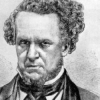Howard Staunton

Howard Staunton
Howard Stauntonwas an English chess master who is generally regarded as having been the world's strongest player from 1843 to 1851, largely as a result of his 1843 victory over Saint-Amant. He promoted a chess set of clearly distinguishable pieces of standardised shape—the Staunton pattern promulgated by Nathaniel Cook—that is still the style required for competitions. He was the principal organiser of the first international chess tournament in 1851, which made England the world's leading chess centre and caused Adolf...
NationalityEnglish
ProfessionCelebrity
hands white squares
The Chess-board must be placed with a white square at the right-hand corner.
white games lasts
After white's reply to 1.e4 e5 with 2.f4 the game is in its last throes
games play skills
To play with correctness and skill the ends of games, is an important but a very rare accomplishment, expect among the magnates of the game.
queens kings men
Be cautious of playing your Queen in front of your King and in subjecting yourself to a discovered check. It is better when check is given to your King to interpose a man that attacks the checking Piece than with one that does not.
two pieces may
A Rook is of the value of five Pawns and a fraction, and may be exchanged for a minor Piece and two Pawns. Two Rooks may be exchanged for three minor Pieces.
queens knights pieces
The Bishop and Knight, in contradistinction to the Queen and Rook, are called Minor Pieces.
party player color
Each player, it will be observed, has eight superior Pieces or officers, and eight minor ones which are called Pawns; and, for the purpose of distinction, the Pieces and Pawns of one party are of a different color from those of the other.
kings moving men
For playing a man to a square to which it cannot be legally moved, the adversary, at his option, may require him to move the man legally, or to move the King.
kings moving men
For touching an adversary's man, when it cannot be captured, the offender must move his King.
kings moving player
In Castling, the King must be moved first, or before the Rook is quitted. If the Rook be quitted before the King is touched, the opposing player may demand that the move of the Rook shall stand without the Castling being completed.
taken play enemy
When a Piece or Pawn is in a situation to be taken by the enemy, it is said to be en prise. To put a piece en prise, is to play it so that it may be captured.
moving boards bishops
The Bishop moves diagonally forwards or backwards, to the extent of the Board.
moving taken men
The Pawn moves only one square at a time, and that straight forward, except in the act of capturing, when it takes one step diagonally to the right or left file on to the square occupied by the man taken, and continues on that file until it captures another man.
queens average games
The Queen is usually reckoned equal, in average situations, to two Rooks and a Pawn, but towards the end of a game she is hardly so valuable as two Rooks.